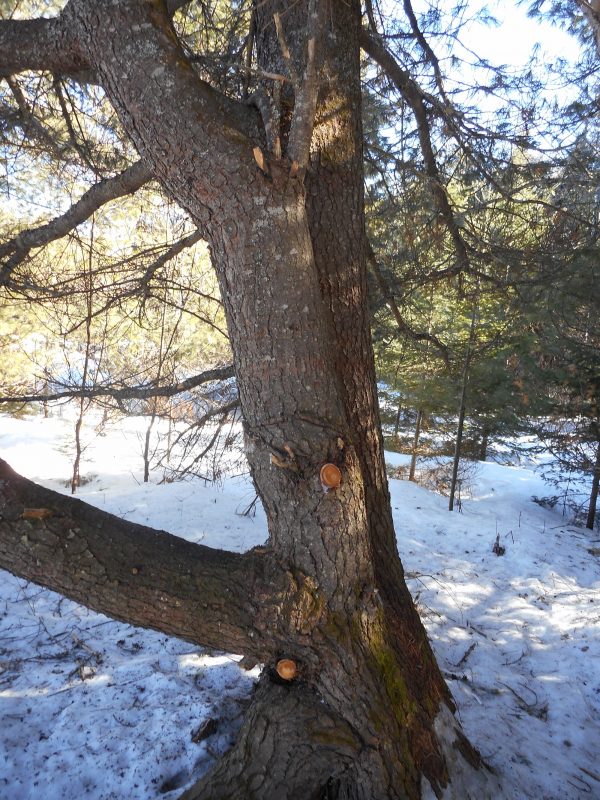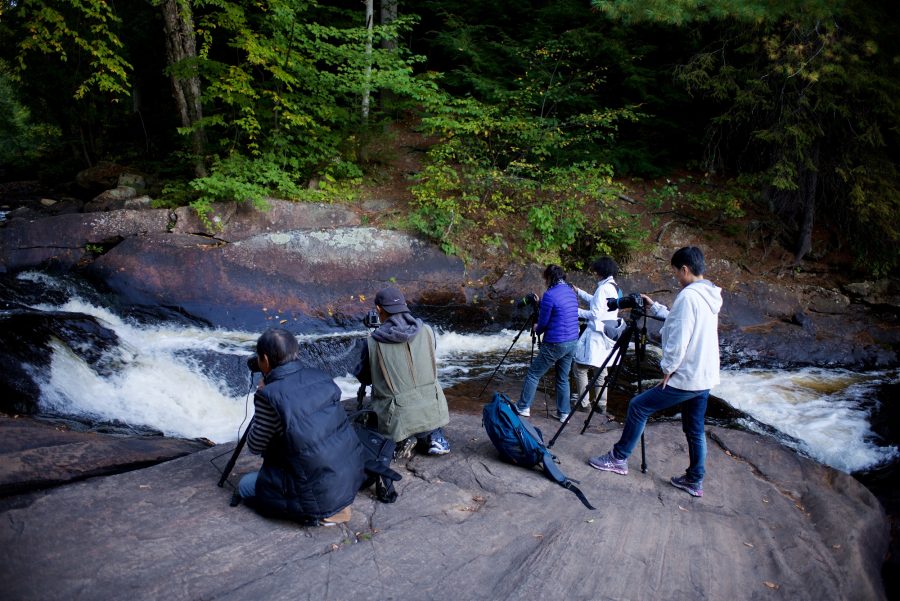You’ve recently unwrapped the latest iphone or a shiny new digital camera, perhaps an SLR with some fancy lenses.
Now you have itchy shutter fingers. You’re ready to point our camera at something spectacular and capture a beautiful memory forever. But where to go?
Not to brag, but Ontario Parks are beautiful, iconic places. Covering nearly 10% of the province and protecting some of Ontario’s most rare and scenic habitats, our parks are home to a variety of wildlife, from fascinating insects to enormous moose.
Basically, they’re a photographer’s dreamscape.
We’re animal lovers too. We know how exhilarating wildlife encounters can be. We understand how badly you want that perfect photo.
But before you hit the road, ask yourself: is taking the perfect photograph worth risking an animal’s life or an ecosystem’s health?
If your answer is “no,” check out our list of seven common photography infractions to ensure you’re keeping our parks safe and healthy.
(By the way, we know most photographers have high standards and strong ethics regarding photographing wildlife [you rock!]. If you’re already an ethical photographer, this might be a great article to share with colleagues or newbies in your own network.)
1. Baiting and feeding wildlife
We’ve seen some truly bad behaviour. Smearing trees with wet cat food and peanut butter to attract pine martens. Luring red foxes into vehicles with chicken meat.
Don’t do this!
The food may not be harmful to the animal immediately, but feeding or baiting “trains” the animal to abandon its natural caution about humans.

Habituation happens when an animal is exposed to a stimulus so many times, it loses sensitivity or stops viewing the stimulus as a threat. Baiting causes habituation, “rewarding” an animal for abnormal behaviour.
We understand you’re dying for a photo of that cool critter, but keep the food in your pocket. It’s not worth risking the animal’s life.
Pst! Even if you are not the “feeder,” taking photos of an animal that is being fed is still training it to be fearless of people.
2. Off-trail trampling
Park staff have seen this on several occasions: a beautiful landscape or wildlife in a predictable place, and a person taking some pictures.
Sounds fine, right?
Absolutely. As long as they’re staying on the trail.

Many of our parks are home to sensitive habitats and species which can inadvertently get trampled, crushed or otherwise destroyed when people leave the trail to chase that glorious photo.
You may not realize how much damage a few steps in the wrong area can do. So stay on the trails; they’re there for a reason.
3. Damaging habitat
Our provincial parks are already scenic wonderlands, but every season, we find photographers who feel the need to “dress the set.”
For example: the branches of this pine tree were pruned back by overzealous photographers trying to find just the right angle.

We found this knife under the tree after they left. They’d used it to smear peanut butter up and down the pine to attract animals.

We’ve also seen photographers collect branches covered with lichen or berries and place them where the birds might land to take a “better” picture.
Damaging and collecting brush in provincial parks is ILLEGAL. Doing so risks harming the ecosystem, as well as a hefty fine.
4. Introducing a non-native species
To avoid getting ticketed for collecting brush, some people will bring sticks and vegetation from home to decorate their scene.
While they aren’t damaging the park’s vegetation directly, they may inadvertently introduce invasive plants to the park. Like firewood, vegetation brought from home may be infected with invasive insects or other pathogens which could damage our forests.
And by the way, leaving these berries and branches behind is littering – another big (and illegal) no-no.
5. Roadside manners
In some parks, animals like moose, white-tailed deer and black bears are commonly spotted along the roads.

Every year we see dozens of traffic jams on our roads and people stopping their vehicle in the live lane. They hop out of the car and stand in the middle of the road, face glued to their viewfinders — oblivious to other vehicles on the road.
Folks: this just isn’t safe!
Before reaching for your camera:
- safely pull your car off the travelled part of the road
- turn on your hazard lights
- look both ways before crossing the road
6. Following wildlife
Animals rarely pose for our pictures. Stellar wildlife photography is often the result of luck, patience and experience.
It’s important to remember: Ethical photographers never get too close to the animal!

The animal may think you are pursuing it (you are!) and may go from placid to defensive. You may also frighten it into risky behaviour, such as running onto a road. This is even more serious is the animal has young with it (you don’t get between Mom and her babies!).
Chasing wildlife or following too closely is also know as “harassing,” and it is illegal.
If you can get a selfie with a phone, you are way too close. Accept the limitations of your camera, pack a zoom lens, and respect the animals’ space.
7. This is a recording
To get a bird to come closer, some photographers will use a recording of its call. Many birds, especially males, will come in close to investigate this potential rival.
During the breeding season this distracts them from real rivals and from taking care of their mate or nestlings. The rest of the year, recordings can stress birds and distract them from feeding. For instance, in winter birds need to eat a lot just to survive the night.
Many parks are home to species that are threatened or endangered, so disrupting them is bad.
Again: it is unlawful to harass wildlife in provincial parks.
We love our photographers
Having said all this, we really appreciate that people come to Ontario Parks to find enjoyment and inspiration here. Many fine photographers have donated pictures to parks, while others have graced park newspaper covers, social media posts and other publications – thanks everybody!

Ethical and responsible photography is a great hobby and an amazing way to get close with nature. Our provincial parks are yours to cherish, and if you care about wildlife and wild places you will try to impact them as little as possible.
So help us get the message out
Spread the word about ecologically ethical photography by sharing this post with your friends. Paste it into your Facebook status or send out a quick tweet.
